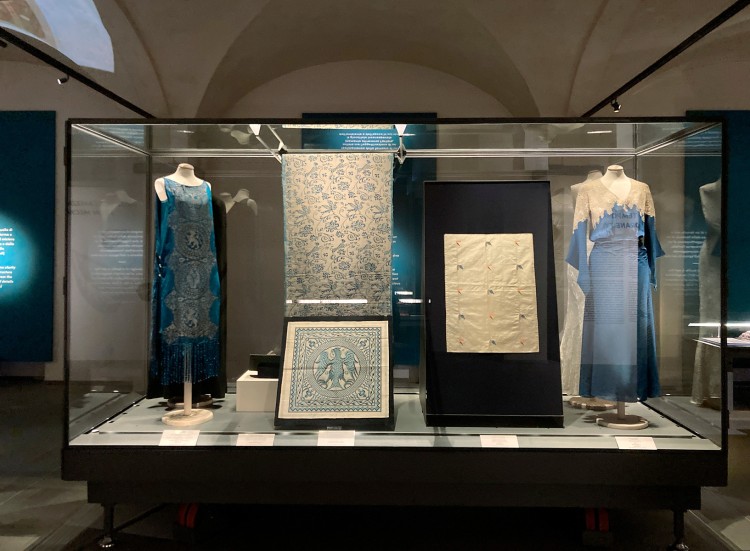 DIDA
Browse
How it works
Insert your collection
News
Contacts us
DIDA
Browse
How it works
Insert your collection
News
Contacts us
Author: Museo del Tessuto
Type:
Room: abiti e accessori

Description
In Italy between 1900 and 1920, the productions of Mariano Fortuny in Venice and Maria Monaci Gallenga in Rome interpreted and reinvented ancient traditions through new techniques and tailoring cuts. In the fabric in the center, Mariano Fortuny applies printing techniques to cotton and velvet. The decorative subjects are inspired by the Italian repertoire of the Middle Ages and Renaissance. But what most characterizes the print is the particular discoloration, which simulates the wear and aging of the fabric. We find the same research in the dress on the left, made by Maria Monaci Gallenga. Her creations are based on designs faithfully taken from patterns of the ancient tradition, printed on a wood matrix with gold and silver pigment. In contrast to the pursuit of antiquity, architect Giò Ponti pursued the search for a new modernity in Italian design, celebrated in the magazine "Domus," which he founded in 1928 . The fabric displayed on the right reflects the characteristics of Giò Ponti's style: on a plain background small stylized motifs symbolically represent water and fire. For Ponti, the fabric becomes an essential part of the furniture and is a key to the style of the rooms.
Photo and Text Credits:
More artworks in abiti e accessori
If you are not at the museum click on the link below and you can test our guide by framing some works directly on the DEMO page.

If you are near the museum you can reach it and by framing with your mobile you can discover the audio guide.
